
Egon Leo Adolf Ludwig Schiele was an Austrian Expressionist painter. His work is noted for its intensity and its raw sexuality, and for the many self-portraits the artist produced, including nude self-portraits. The twisted body shapes and the expressive line that characterize Schiele's paintings and drawings mark the artist as an early exponent of Expressionism. Gustav Klimt, a figurative painter of the early 20th century, was a mentor to Schiele.

The Österreichische Galerie Belvedere is a museum housed in the Belvedere palace, in Vienna, Austria.

The Leopold Museum, housed in the Museumsquartier in Vienna, Austria, is home to one of the largest collections of modern Austrian art, featuring artists such as Egon Schiele, Gustav Klimt, Oskar Kokoschka, and Richard Gerstl.

Egon Schiele – Exzess und Bestrafung, also known as Egon Schiele – Excess and Punishment (English) and Egon Schiele, enfer et passion (French) is a 1980 film based on the life of the Austrian artist Egon Schiele. Set in Austria during the years immediately prior to and during the Great War, the film stars Mathieu Carrière as Schiele, with Jane Birkin as his muse Walburga (Wally) Neuzil, Christine Kaufmann as his wife Edith, and Kristina van Eyck as Edith's sister. Essentially a depiction of obsession and its constituents of sex, alcohol, and uncontrolled emotions, the film portrays Schiele as an agent of social change leading to the destruction of those he loves and ultimately of himself.
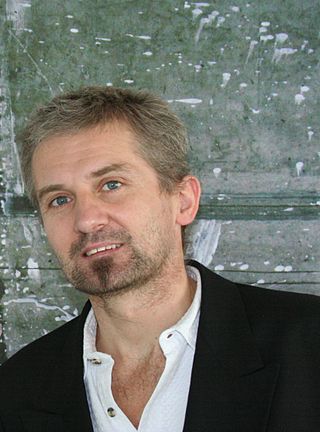
Manfred "KILI" Kielnhofer is an Austrian painter, sculptor, designer and photographer. Due to his antisemitic statements in connection with the planned vaccination to contain the COVID-19 pandemic, numerous of his works of art were removed from public space.
Rudolf Leopold was an Austrian art collector whose collection, comprising more than 5,000 works of art, was established as a private foundation in 1994. The foundation was created and financed by the Government of Austria, the National Bank of Austria, and the collector himself. This private foundation became the foundation for the Leopold Museum in Vienna, where Rudolf Leopold was appointed lifelong director. The collection's art-historical focus, primarily consisting of works from the early 19th century to 1938, centers around the paintings of Egon Schiele. The Leopold Museum houses the world's largest and most significant collection of Schiele's work, alongside masterpieces by other major Austrian artists of the period, such as Gustav Klimt and Oskar Kokoschka. The museum also displays Secessionist-style crafts, furniture, and design. Today, the Leopold Museum stands as the leading institution for showcasing a representative overview of the art of "Vienna 1900," in all its forms and media.

Portrait of Wally is a 1912 oil painting by Austrian painter Egon Schiele of Walburga "Wally" Neuzil, a woman whom he met in 1911 when he was 21 and she was 17. She became his lover and model for several years, depicted in a number of Schiele's most striking paintings. The painting was obtained by Rudolf Leopold in 1954 and became part of the collection of the Leopold Museum when it was established by the Austrian government, purchasing 5,000 pieces that Leopold had owned. Near the end of a 1997–1998 exhibit of Schiele's work at the Museum of Modern Art in New York, the painting's ownership (provenance) history was revealed in an article published in The New York Times. After the publication, the heirs of Lea Bondi Jaray, to whom the work had belonged before World War II, contacted the New York County District Attorney who issued a subpoena forbidding its return to Austria. The work was tied up in litigation for years by Bondi's heirs, who claimed that the painting was Nazi plunder and should have been returned to them.
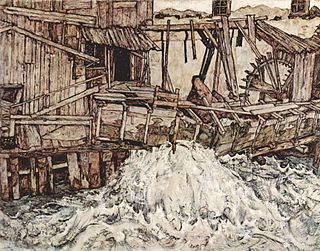
The Egon-Schiele-Museum is a biographical museum in Tulln, Lower Austria, dedicated to the Austrian painter Egon Schiele, who was born in Tulln.
The Moldau-Stipendium was a literary and art prize of the Hessian Ministry for Science and the Arts, which was awarded from 1998 to 2010. The Ministry allowed artists to stay in the "Egon Schiele Art Centrum" located in Český Krumlov, Czech Republic by funding all costs for up to two months. Applicants had to have lived in Hesse for at least two years; prizewinners were selected by the Ministry.

Tets Ohnari is a Japanese sculptor and contemporary artist living and working in both, Tokyo and Prague.
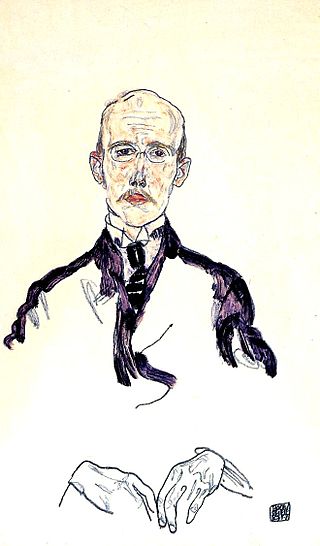
Karl Mayländer was an Austrian art collector and businessman who was deported in 1941 from Vienna to Łódź, in German-occupied Poland, by the Nazis and later murdered in the Shoah.
Jane Kallir is an American art dealer, curator and author. She is co-director of the Galerie St. Etienne in New York, which specializes in Austrian and German Expressionism as well as self-taught and “outsider” art. In 2020, the gallery ceased commercial operations and became an art advisory. Its archives and library were transferred to the Kallir Research Institute, a foundation established in 2017. Kallir serves as President of the KRI. She has curated exhibitions for many American and international museums and is the author of the catalogue raisonné of Egon Schiele’s work in all mediums.
Galerie St. Etienne is a New York art gallery specializing in Austrian and German Expressionism, established in Vienna in 1939 by Otto Kallir. In 1923, Kallir founded the Neue Galerie in Vienna. Forced to leave Austria after the 1938 Nazi invasion, Kallir established his gallery in Paris as the Galerie St. Etienne, named after the Neue Galerie's location near Vienna's Cathedral of St. Stephen. In 1939, Kallir and his family left France for the United States, moving the Galerie St. Etienne to New York City. The gallery still exists, run by Otto Kallir's granddaughter Jane at 24 West 57th Street.
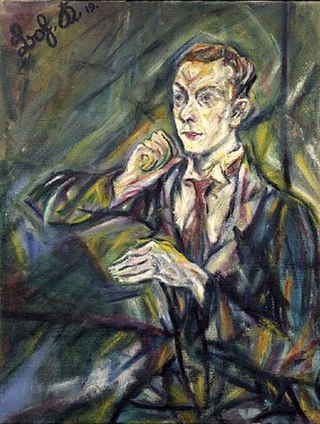
Otto Kallir was an Austrian-American art historian, author, publisher, and gallerist. He was awarded the Silbernes Ehrenzeichen für Verdienste um das Land Wien in 1968.
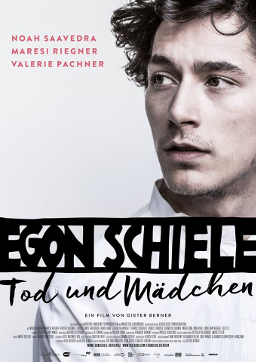
Egon Schiele: Death and the Maiden is a 2016 Austrian / Luxembourgish biographical film directed by Dieter Berner.
Christian M. Nebehay was an Austrian art dealer, art collector and author. He became internationally known – particularly in the art world – for his works on Gustav Klimt and Egon Schiele.

Dead City III is an oil on wood expressionist painting by Egon Schiele from 1911. It was owned by the Viennese cabaret artist Fritz Grünbaum before he was murdered by Nazis and has been the object of high-profile disputes and court battles. Suspected by New York's District Attorney of having been looted by the Nazis, Dead City III was temporarily confiscated from the Austrian art collector Rudolf Leopold after he loaned it to a New York museum in 1998. The ownership history of the painting has been the object of high-profile court cases in which two very different versions of the painting's journey from the Jewish Holocaust victim to the Austrian art collector collide.

Seated Woman with Bent Knees is a 1917 painting in gouache, watercolor, and black crayon on paper by the Austrian Expressionist artist Egon Schiele.














